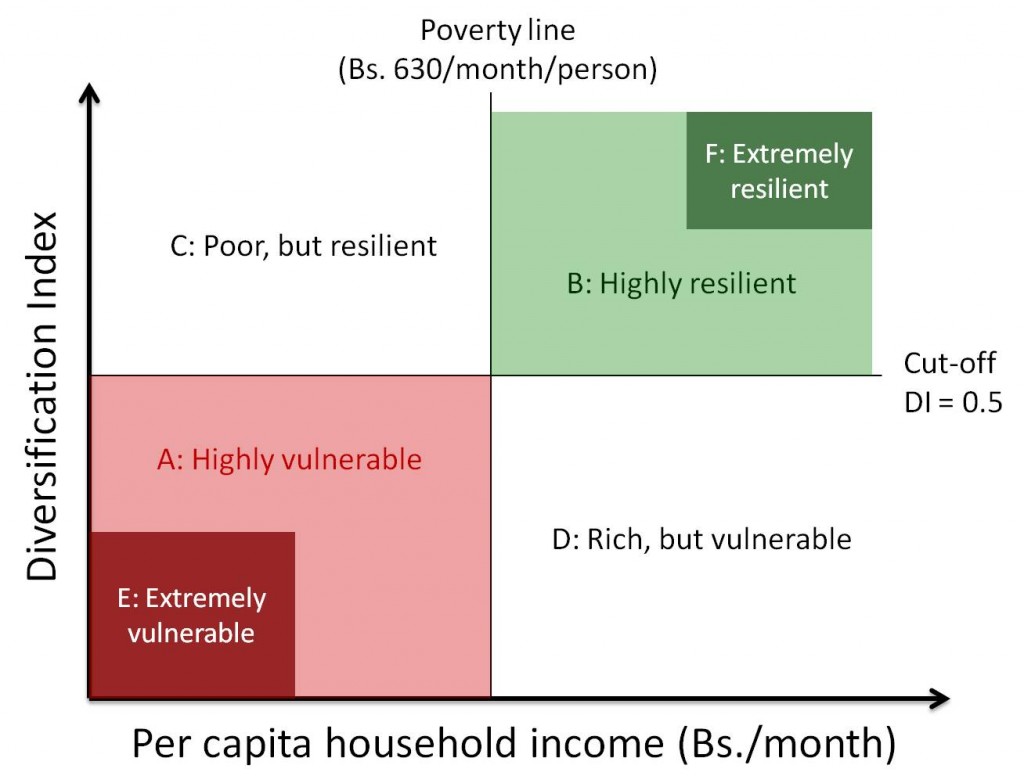Not Only Rural, Indigenous, Old Women are Vulnerable
by Lykke E. Anderson, INESAD
Even the most affluent and powerful people in the World are exposed to the risk of adverse shocks and stresses: Christopher Reeve (Superman) became a quadriplegic after a riding accident; Nelson Mandela was imprisoned for 27 years; Mel Gibson had to pay more than $400 million in his divorce settlement; Steve Jobs got fired from his own company; and Donald trump has declared bankruptcy four times.

We are all at risk of adversity, or even calamity, and the list of threats is endless: Natural disasters, illness, accidents, unemployment, price fluctuations, conflict, vandalism, fire, robbery, pest attacks, technological change, pollution, climate change, etc. Most of these threats are almost entirely outside our control and it is important that we build up resilience against them so that we will be able to overcome the challenges that we are bound to encounter.
Some people and households are more resilient than others, however. They bounce back even after severe adversity. Nelson Mandela, for example, became one of the most famous and respected presidents in the World and was awarded the Nobel Peace Prize after spending 27 years in prison; Christopher Reeve claimed that the accident, which left him paralyzed from the neck down, helped him appreciate life more and considered himself a very lucky man less paralyzed than many able-bodied men; and Donald Trump evidently rebuilt his fortune between bankruptcies.
While resilience is an integral part of the human psychology, it would be useful if we could measure and compare resilience in a more general way. This is what a new research paper and Policy Brief from INESAD proposes.
Andersen & Cardona (2013) proposes a simple two-dimensional measure of vulnerability/resilience. On the horizontal axis we have per-capita income (because people with low income have greater sensitivity to a decline in incomes) and on the vertical axis we have an Index of Income Diversification (because more diversified households are less sensitive to a shock). The most vulnerable households would be the ones that have very low incomes coming mainly from one single source. In contrast, the most resilient households would be the ones with high incomes coming from several different and uncorrelated sources.
Figure 1: The six vulnerability types used Andersen & Cardona (2013)

Using household surveys to classify Bolivian households into the vulnerability types illustrated in Figure 1 we can identify the most vulnerable households as well as the factors and strategies that are associated with vulnerability or resilience.
The results may surprise, as they contest some common assumptions about who is most vulnerable. For example, the probability of being highly vulnerable is 43.8% for peri-urban households headed by a non-indigenous male of 26 years or younger that has migrated to the place within the last 5 years and includes at least one child. The probability of being highly vulnerable for this type of household is 2-3 times higher than the corresponding probabilities for female headed households (12.4%), indigenous households (19.1%), and rural households (19.7%).
There are thus some highly vulnerable groups that are almost completely ignored by traditional poverty reduction efforts and cash transfer programs, since they are not rural, not female headed, not indigenous, and do not have elderly people entitled to Renta Dignidad (by far the main cash transfer program in Bolivia). Young, peri-urban households, in which the mother cannot work due to child rearing obligations, stand out as some of the most vulnerable households in Bolivia.
To read more about this research, please consult the policy brief or the research paper. Printed copies of the policy brief will be distributed Thursday the 27th of March at the presentation “Economía Política de los Bonos Sociales” by Thomas Aston at the Central Bank of Bolivia (27th Floor, from 11:15 to 12:45; downlead invitation here). Printed copies (in either Spanish or English) can also be requested by sending an e-mail to Natalia Zegarra ([email protected]).
For your reference:
Andersen, L. E. & M. Cardona (2013) “Building Resilience against Adverse Shocks: What are the determinants of vulnerability and resilience?” Development Research Working Paper Series No. 02/2013, Institute for Advanced Development Studies, La Paz, Bolivia, June.
Andersen, L. E., T. M. T. Aston & M. Cardona (2014) “The factors and strategies that determine vulnerability and resilience.” INESAD Síntesis No. 10, February.







